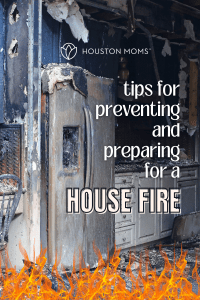We all think a house fire will never happen to us. I thought the exact same thing, and then it did happen. In 2017 my house burned down with my husband and dog inside. Firefighters to this day do not know how my husband is alive, but I thank God every day for his life and that I don’t have to go at all of this alone. We had to say goodbye to our black lab Samantha (Sam) on the front lawn that day, while firefighters were still trying to control the blaze.
We learned so much that day, and much more in the coming months and years after. Regular therapy and hard work has brought us to a place today were we can talk about our experience and use it for good: to help others prevent, prepare, and recover after a house fire.
The Hard Truths About House Fires
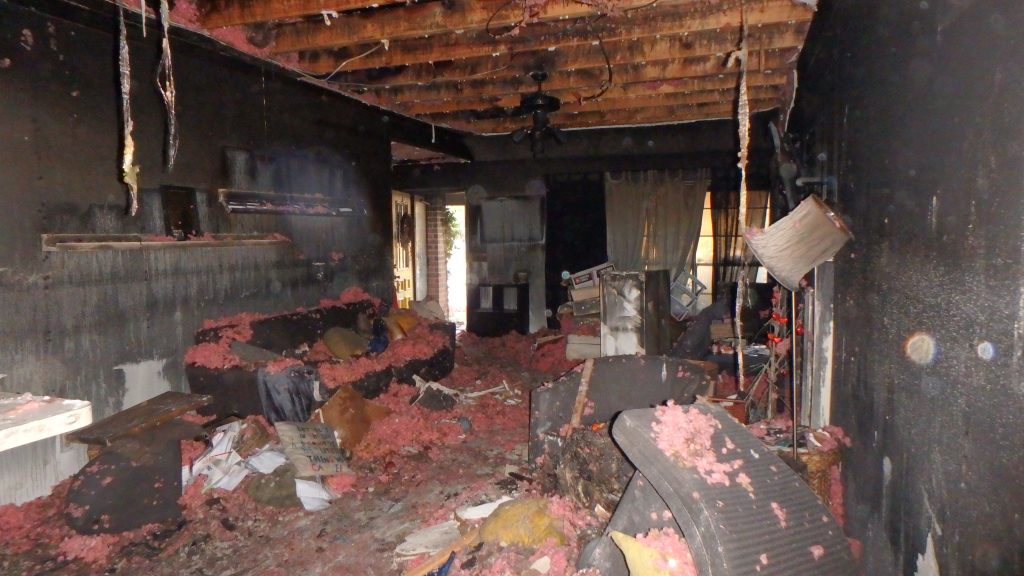
There Is No Going Back In
That episode of This Is Us, you know the one, the house fire one, aired about 11 months after our fire. I’ve never watched the show, but so many people called us or texted us about the episode and how closely it resembled our own story. That episode infuriates me to this day. I’m here to tell you, it is 100% Hollywood. Do not be fooled.
My husband Bill climbed out of our bedroom window and barely made it out of our burning house. When he woke up and realized what was happening, he had seconds. After calling 911, he called me, and the last words he said to me on the phone were, “I can’t find Sam.” He tried to go back in for her. He broke the window of our back French doors with a piece of large metal lawn art. The heat and the deadly smoke shot out at him. Oxygen feeds fire. He moved back about 20 feet to avoid the heat and smoke as best he could, all while screaming Sam’s name.
She never came.
There was no going back in; Sam was already gone from the toxic smoke. Our stuff was already gone. Bill was taken to the hospital with smoke inhalation because he was in the house while it was burning.
There is no going back in.
Understanding this, accepting it, is tough, but doing so could save your life.
Repeat with me, there is no going back in.
We Have Even Less Time Today
 35 years ago you had 17 minutes to escape a house fire, today you have less than three. Newer homes, and the furniture and textiles in them, burn faster and hotter, and the smoke from them is more deadly.
35 years ago you had 17 minutes to escape a house fire, today you have less than three. Newer homes, and the furniture and textiles in them, burn faster and hotter, and the smoke from them is more deadly.
In 2016 The Today Show went to a safety science company for an experiment. They built two nearly identical living rooms. The antique living room was filled with furniture built in the 1960s and 1970s, built with mostly natural materials. The modern living room was filled with the furniture of today, built with mostly synthetic materials. Within 3 minutes flames were through the roof in the modern living room. The antique living room took nearly 30 minutes to be engulfed.
Synthetic materials in your curtains, mattress, bedding, carpet, couch, shelves and more all burn hotter and faster. Fire spreads quickly in modern homes and by the time a smoke alarm is sounding, you have seconds to get out.
Repeat with me, there is no going back in.
How to Prevent & Prepare
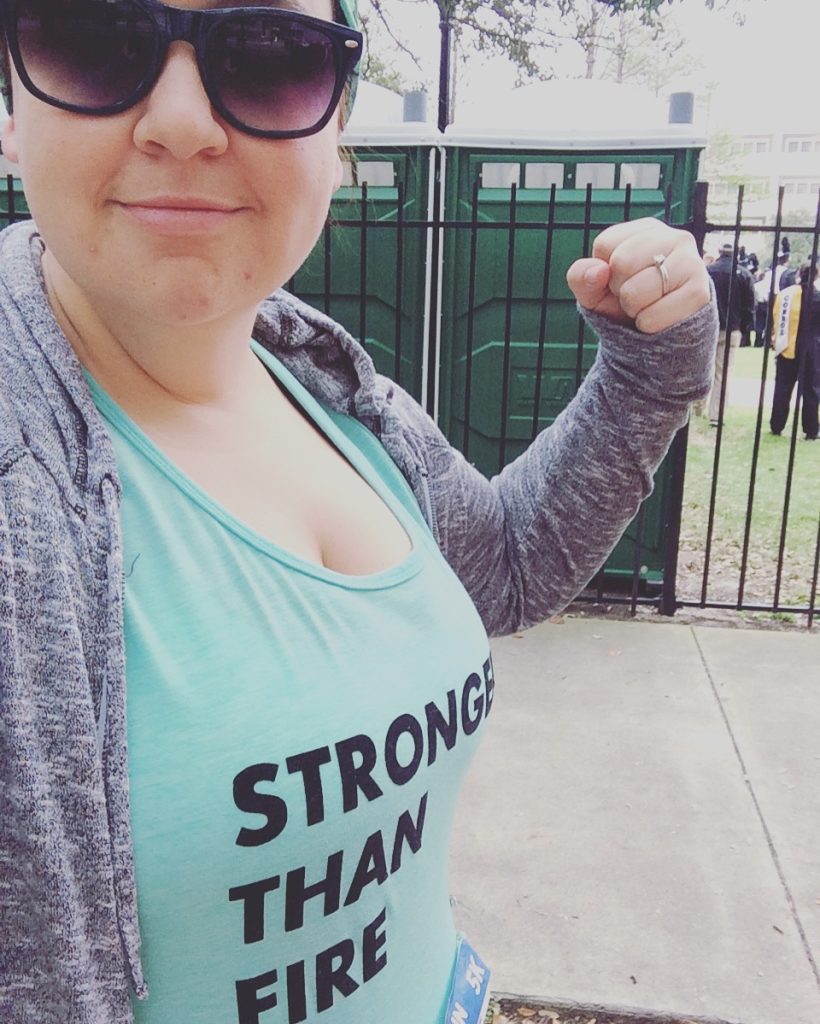 Know Where & How Fires Start
Know Where & How Fires Start
Most home fires start from one of five causes: cooking, heating, electrical distribution and lighting equipment, intentional fire setting, and smoking materials. This is a very truncated list of recommendations. I highly recommend you visit the National Fire Protection Association and download their full fire safety guide.
Cooking Related Fires
Most home fires start in the kitchen, the leading cause is unattended cooking.
- Don’t walk away from the stove when you are cooking, even “just for a second”; use a timer to remind you.
- Keep things that can catch fire away from heat sources and never use your microwave or oven as a storage space.
- Have a 3’ kid free and pet free zone around the stove. Teach your children about safe cooking habits BEFORE they are cooking on their own.
Candles
A candle was the cause of our house fire. Today, we just choose not to use them. They remain one of the leading causes of house fires.
- Consider using battery operated, flameless candles.
- Keep candles at least 12 inches from anything that can burn and within glass chimneys or containers.
- Avoid candles in bathrooms, bedrooms and sleeping areas.
- Never leave a candle unattended, always blow it out before leaving a room.
If you are going to light a candle, set a timer to remind you to blow it out.
Heating Equipment
Heating Equipment includes anything from furnaces to fireplaces.
- Have furnaces, ac units, and chimneys inspected yearly.
- Create a 3’ kid and pet free zone around open fires and space heaters.
- Keep items at least 3’ away from any heat source.
- Update old space heaters to versions with auto off features if they are tipped over.
The Garage & Laundry Room
Combined, laundry room and garage fires account for over 19,400 home fires annually, yet these two areas often go overlooked when it comes to fire safety.
- Put a smoke alarm in your garage. If your garage connects to your home, put a smoke alarm just inside the connecting door.
- Clean your dryer’s lint filter before each use.
- Dryer lint is extremely flammable. Clean out your dryer vent pipe starting from the dryer all the way to the outside quarterly. Also clean out behind the dryer, around the wall, lint can collect here too.
- If you notice the dryer is taking longer to dry your clothes, you should clean it more often.
- Do not run a dryer when you are not home or when you are asleep.
- Cover your garage walls with drywall to help prevent fire spread.
- Most garage fires start with the vehicle. Update vehicles regularly and if you park in your garage, store flammable items such as solvents, paints and gas in an outdoor shed.
Practice Fire Safety
From smoke alarms, to having a plan, practicing good fire preparedness can save your life. I was pretty regimented on checking smoke detector batteries, but we had an older home and did not have nearly enough of them. We also did not have a plan which made the day more chaotic for us and for the fire fighters.
Smoke Alarms
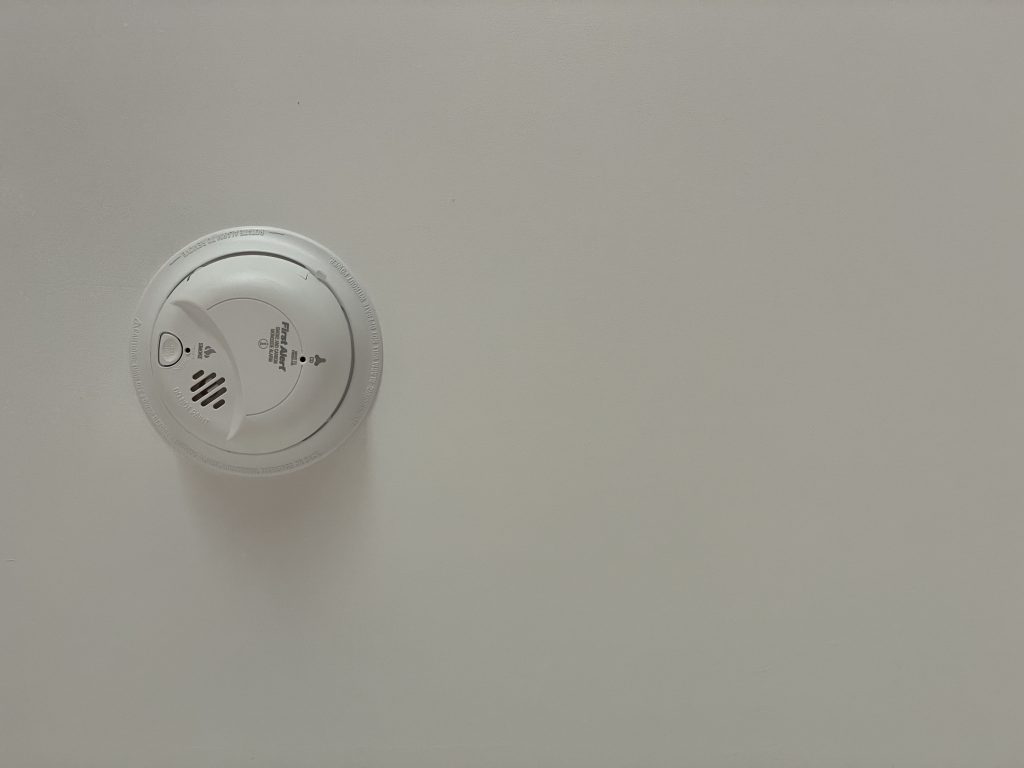
Our smoke alarms went off, but my husband was asleep with the door closed and never heard them. In addition, our A/C continued to run while the fire was going which distributed smoke to all the rooms in the house. When we rebuilt our home we chose to use interconnected smart smoke detectors that connect to our HVAC system. If smoke is detected, it shuts off the HVAC and alerts our phones.
- Smoke alarms should be installed IN every sleeping area.
- Smoke alarms should be installed OUTSIDE every sleeping area.
- Smoke alarms should be installed on every level of the home, in every room.
- Interconnect smoke alarms so if one sounds, all of them sound.
- For smoke alarms with lifelong batteries, they should last up to 10 years. If one chirps, replace the entire alarm right away.
- For smoke alarms with replaceable batteries, change them once a year and when the alarm chirps.
- Run smoke alarm drills with your family so if your kids hear them, they can recognize the sound and know what to do.
Have a Plan
We did not have a plan. The plan I made in my head was me running all over the house to save important items. We now know, this idea should remain in fairytale land.
- Draw a map of each level of the home, showing all doors and windows. Walk to each room and point to two ways out. Practice the plan with everyone in your household. The red cross has a great Home Fire Escape Plan worksheet here.
- Decide who is going to get the kids, pets, or anyone who would need extra assistance. Work out different plans based on scenarios at different times of day and with a fire starting in different parts of the house.
- Teach your kids how to escape on their own if you can’t get to them. Make sure they know how to open windows and screens and unlock doors on their own.
- If you have a second story, buy a fire escape ladder and practice using it.
Make sure everyone in your house knows how to dial 911. If you keep your phone locked, make sure your kids can get into your cell phone to call 911. - Have an outside meeting place, a safe distance from your home, where you can find each other.
- Sleep with your glasses and phone close to your bed.
Other Tips
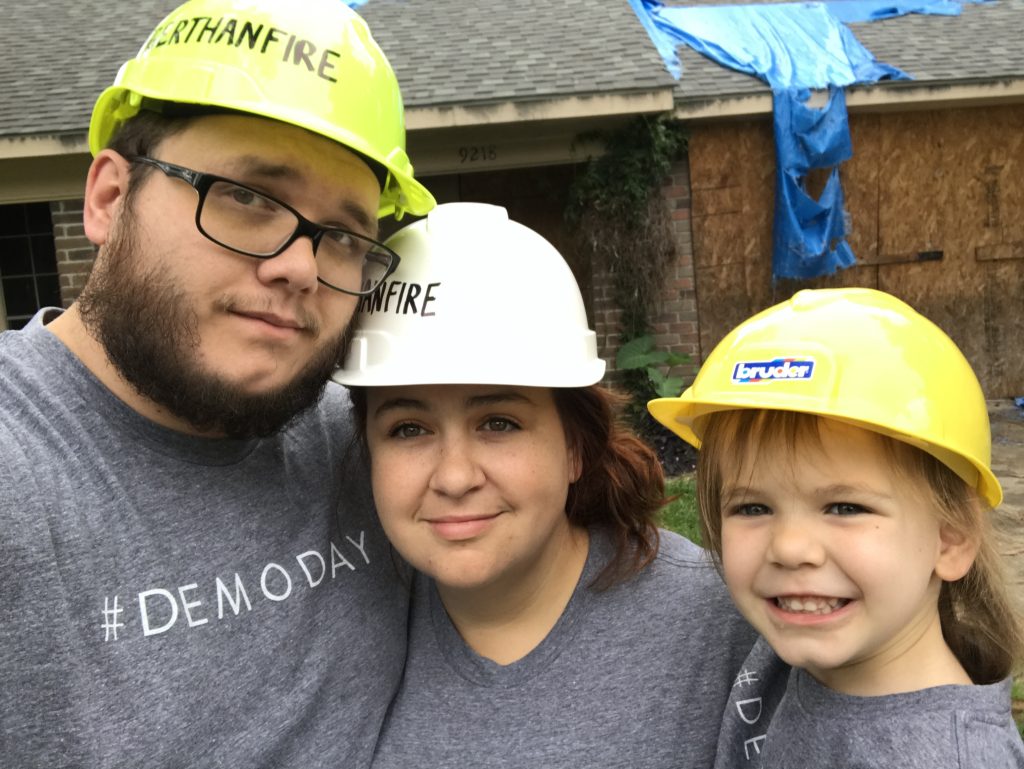 Sleep with the doors closed, close doors when you leave your home. When we rebuilt we chose to use solid core doors on all the bedrooms {most are hollow core}. Solid core doors usually include a fire rating of up to 20 minutes.
Sleep with the doors closed, close doors when you leave your home. When we rebuilt we chose to use solid core doors on all the bedrooms {most are hollow core}. Solid core doors usually include a fire rating of up to 20 minutes.- Keep important documents and items in a fireproof safe. I can tell you from experience, replacing every single form of identification for your entire family is tough.
- Backup computers and phones to the cloud. My greatest loss, other than our sweet dog, was all of our family photos and videos.
- Have multiple exits from your backyard. Bill was stuck in the back yard because we only had one gate and the flames, smoke and heat were too thick on that side of the house for him to leave. When I arrived on the scene I couldn’t find him and thought he had gone back in for Sam.
- When buying furniture, bedding and other large materials for your house, consider buying items made of natural materials instead of synthetic.
Educate Yourself
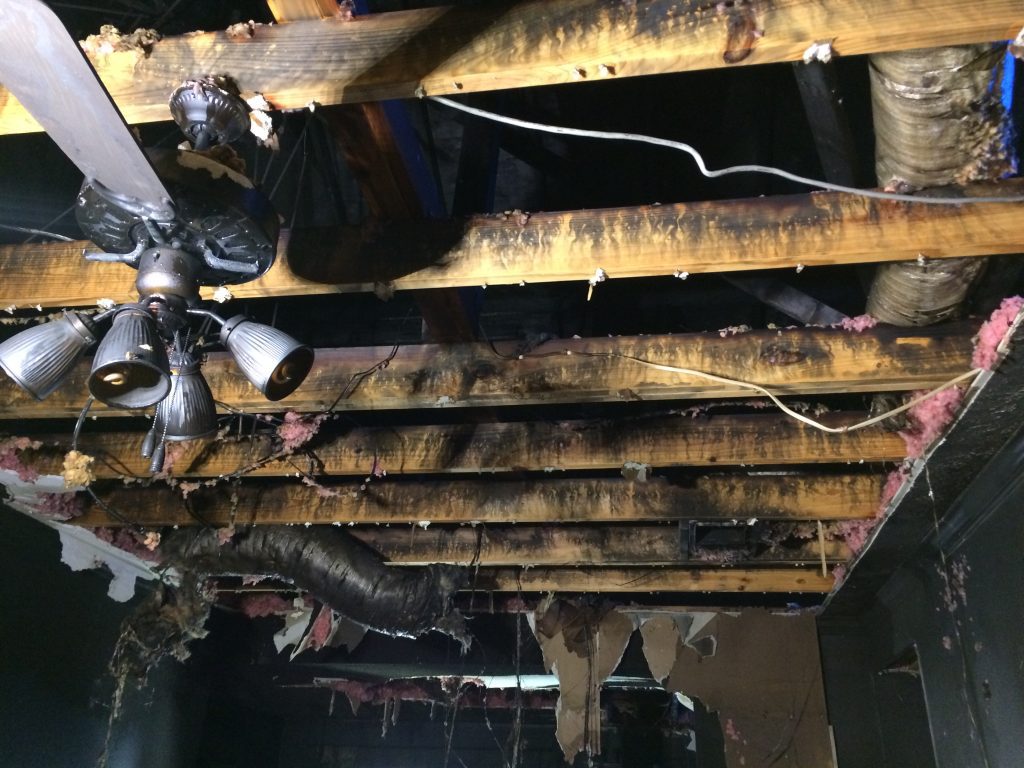 The Houston and Klein fire departments, as well as many others around the Houston area are glad to do presentations and talks about fire safety and preparedness with companies, schools, churches and other groups. Just look for the public education portion of their website.
The Houston and Klein fire departments, as well as many others around the Houston area are glad to do presentations and talks about fire safety and preparedness with companies, schools, churches and other groups. Just look for the public education portion of their website.
Most firefighters will tell you, when in doubt, call them. Even if it’s a small kitchen fire, firefighters can check for any other hot spots in the house which could ignite later.
Talk about house fires with your kids. Talk about fire safety around campfires and fireworks. Teach your children what to do if they see a fire.
I recently met the firefighter who found and tried to revive our dog Sam that day. It turns out he is one of our neighbors. I reached out to him before writing this article to make sure I had my facts right and to get a firefighter’s perspective on some of the tips. I’ll leave you with a direct quote from him:
“Fire goes up. Fire chases air. Fire follows the path of easiest resistance. It consumes like a living creature.”
I can attest that this is exactly what fire does. I watched it. I watched it breathe through the mortar on the bricks of our house. I watched it shoot out of my daughter’s bedroom window. I watched it catch trees on fire. I saw how it tore through the attic and spread across our house, how it melted the A/C registers, how the smoke permeated every nook, cranny and crevice, including our dog’s lungs.
You have little time. Don’t go back in. Practice fire safety and preparedness. Educate yourself. Learn from our mistakes. If we can help one person, it makes all of our trauma worth it.
If you want to read more about our fire story, or if you know someone who has recently experienced a home fire, you can get more information and a checklist of what to do when your house burns down from our website www.StrongerThanFire.com.








